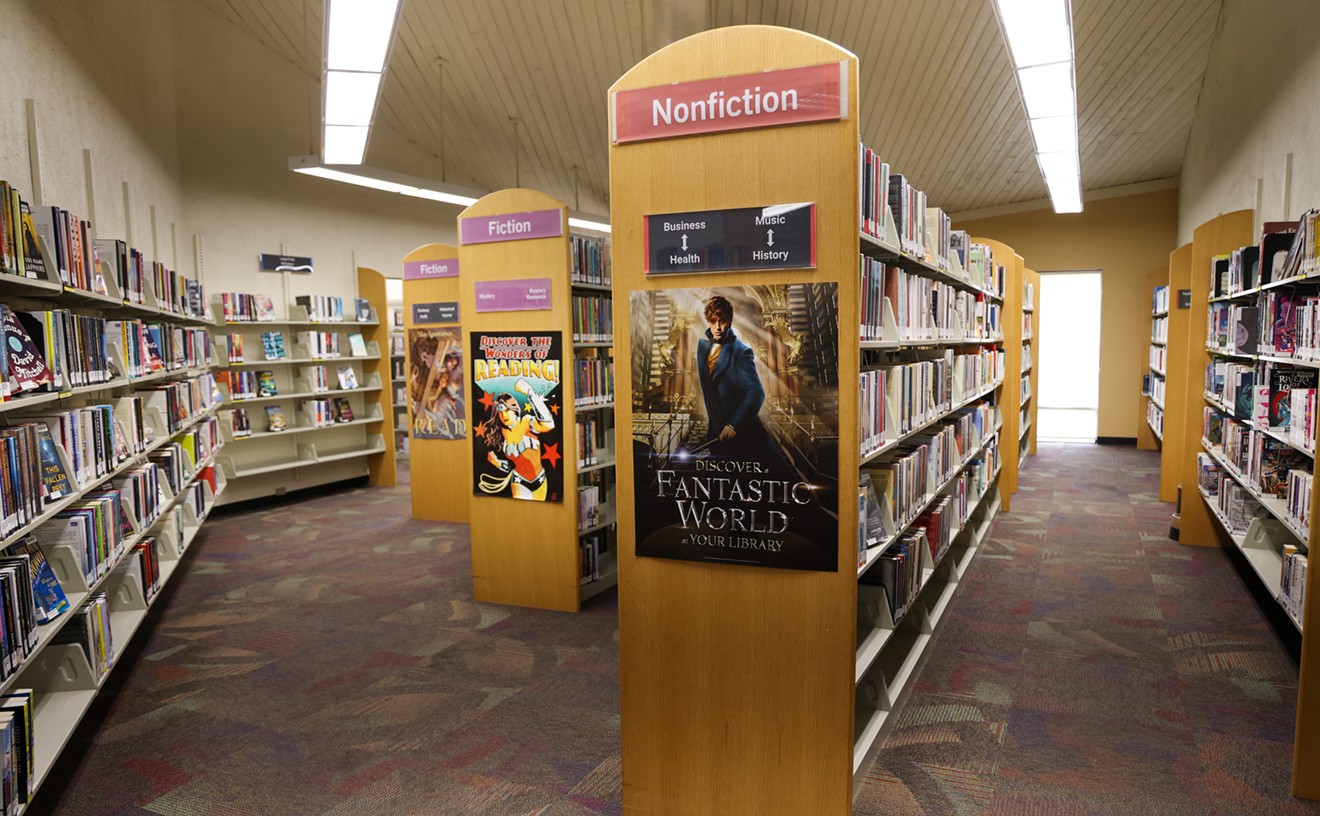High-Rise weaves a remarkable web of contradictions. Debuting locally at Phoenix Film Festival this past weekend, the film tells a grand, sweeping story within the confines of a single apartment building over a three-month period. It's a flashy, graphically violent, high-intensity thriller, as well as a metaphorical thinkpiece on the nature of British capitalism. It's even simultaneously set in the 1960s and the near future with little explanation as to how or why. Yet it all works a lot better than it should.
Tom Hiddleston stars as Robert Laing, a doctor and bachelor who moves into a new single-bedroom apartment in what everyone mysteriously calls "the building." This structure is the true protagonist of the film: an enormous tower block with everything from a gym to a grocery store contained within its walls, organized with the lowest-class tenants on the bottom and the highest class on the top. The building's diversity of residents and amenities, mixed with its self-containment, make it an equally fascinating and claustrophobic setting, perfect for a scienc-fiction thriller. The story only leaves the building two or three times during the film, when Laing goes to work, and that's perhaps two or three times too many.
Laing gets the most time on screen, but only marginally more than the rest of the ensemble cast: Charlotte Melville (Sienna Miller), Laing's upstairs neighbor and romantic interest; Richard Wilder (Luke Evans), a documentary filmmaker who also lusts after Charlotte; Helen Wilder (Elisabeth Moss), Richard's very pregnant wife; Anthony Royal (Jeremy Irons), the architect of the building who lives in the penthouse with his wife (Keeley Hawes); Jane Sheridan (Sienna Guillory), a famous but lonely actress; and many more. Given the film establishes such a dauntingly large collection of characters, it does a remarkable job of showing their individual motivations, developing their stories naturally, and butting them against one another at critical moments.
The same cannot be said for Laing, who dabbles in both the higher- and lower-class groups, remaining the straight man to a fault. Outside of some stray comments about his recently deceased sister and wanting to start over with a "clean slate," we never learn much about him or what he wants. His passivity is largely what makes the first half of the movie so lacking in momentum, as he shuffles from one room of the building to the next, simply reacting to the events around him.
What remains interesting, however, are director Ben Wheatley's unique stylistic touches in his filmmaking. Not only does the general atmosphere of the 1960s-punk setting feel distinct, but he fills it with moments that blend grotesque violence with creative filming approaches, the sort of thing that would come off as pretentious in other filmmakers' hands but carries an impact in his. We watch one character fall from the top of the building and land on a car in hyper-slow motion; it's through the lens of a kaleidoscope that we see another get stabbed to death. One early shot, in which Laing peels the skin off a human skull with his bare hands as part of a medical demonstration, remains brutally ingrained in our memories.
Tensions mount significantly in the latter half of the film, when the conflicts between the upper- and lower-class residents send the building into all-out chaos. It's at this point that the film begins making rather bold claims about the nature of British capitalism, and the moments where the film most blatantly conveys its political message are its weakest. A high rise where the higher classes literally live above the lower classes isn't a particularly subtle metaphor to begin with, and the film's most articulate moments are also its most heavy-handed. At this point, the plot begins making so little sense that the building clearly becomes a metaphor for a social structure rather than an actual place, a shift that will surely turn off many viewers.
But the film's bold ambition in every aspect of its composition — the extremist political message, the overpowering sense of isolation within the building, the indulgent but memorable directorial choices — make it worth your time and money despite its obvious weak points. It's the kind of film that's guaranteed to spark discussion, and the kind of film that wants nothing more than that.
[
{
"name": "Air - MediumRectangle - Inline Content - Mobile Display Size",
"component": "18478561",
"insertPoint": "2",
"requiredCountToDisplay": "2"
},{
"name": "Editor Picks",
"component": "16759093",
"insertPoint": "4",
"requiredCountToDisplay": "1"
},{
"name": "Inline Links",
"component": "17980324",
"insertPoint": "8th",
"startingPoint": 8,
"requiredCountToDisplay": "7",
"maxInsertions": 25
},{
"name": "Air - MediumRectangle - Combo - Inline Content",
"component": "16759092",
"insertPoint": "8th",
"startingPoint": 8,
"requiredCountToDisplay": "7",
"maxInsertions": 25
},{
"name": "Inline Links",
"component": "17980324",
"insertPoint": "8th",
"startingPoint": 12,
"requiredCountToDisplay": "11",
"maxInsertions": 24
},{
"name": "Air - Leaderboard Tower - Combo - Inline Content",
"component": "16759094",
"insertPoint": "8th",
"startingPoint": 12,
"requiredCountToDisplay": "11",
"maxInsertions": 24
}
]










